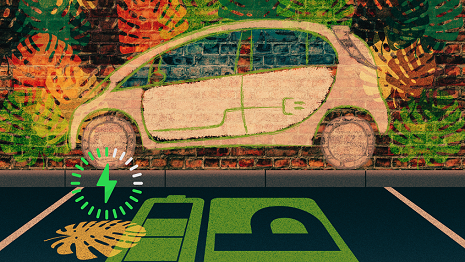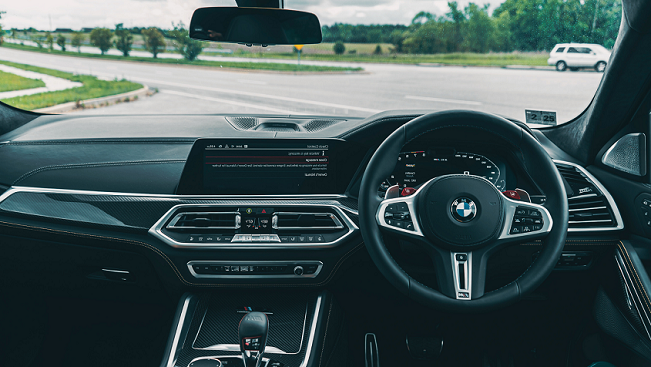
The electric vehicle (EV) market is growing quickly as people want eco-friendly and easy ways to travel. Wireless charging is a new technology that is changing how electric vehicles are charged. It removes the need for cables, making it easier for EV owners. This article will explain how wireless charging works, its benefits, recent updates, and what the future might look like for this technology. In this article, we will explore how wireless charging for EVs works, its benefits, current developments, and what the future holds for this innovative technology.
How Wireless Charging for EVs Works
Wireless charging, or inductive charging, uses magnetic fields to send energy between two coils: one on a charging pad and another in the vehicle. There are three main parts: the charging pad (transmitter), the vehicle’s receiver coil, and a power control unit.
1-Charging Pad (Transmitter)
The charging pad is connected to a power source. When an electric vehicle with a receiver coil is parked near the pad, electricity flows through the transmitter, creating a magnetic field.
2-Vehicle’s Receiver Coil
Receiver coil: The electric transmitter of the electric power source outputs current, and then the current is transmitted to the transmitter.
3-Power Control Unit
The power control unit manages the conversion of AC to DC and regulates the charging process to ensure safe and efficient energy transfer. The DC electricity is then used to charge the EV’s battery.
Benefits of Wireless Charging for EVs
Compared with the direct-to-electrical power grid, wireless charging equipment has several advantages, including the electric vehicle and the manufacturer’s specific advantages.
Convenience
One of the primary benefits of wireless charging is its convenience. Drivers simply need to park their EV over the charging pad, and the charging process begins automatically. This eliminates the hassle of handling charging cables and connectors, making the charging experience more user-friendly.
Safety
Online charging can be used to charge batteries and electronic devices. It also maximizes the cutting efficiency of the gas flow and reduces the risk of gas leakage to the maximum extent.
Aesthetic and Space-Saving
Wireless charging systems can be seamlessly integrated into parking spaces, garages, and public charging stations, reducing visual clutter and saving space. This integration is particularly beneficial in urban environments where space is limited.
Durability
Wireless charging systems are less prone to wear and tear than traditional plug-in chargers. Since there are no physical connectors involved, the risk of mechanical damage is reduced, resulting in a longer-lasting, more reliable charging infrastructure.
Automated and Autonomous Charging
Wireless charging is well-suited for automated and autonomous vehicles. As the automotive industry moves towards self-driving technology, wireless charging provides a hands-free and efficient solution for keeping EVs charged without human intervention.
Current Developments in Wireless Charging
The electric technology of electric vehicles has achieved remarkable results. Advance:
Qualcomm Halo
Qualcomm has developed Halo wireless charging technology, which uses harmonic inductive coupling to achieve high power transmission. The system is designed for static and dynamic operation.
WiTricity
WiTricity is the leading technology solution for the electronics industry. The company’s wireless charging system is designed to increase power levels, making it suitable for use in everything from cars to commercial vehicles.
Plugless Power
WiTricity is a top company in wireless charging for electronics. Their system increases power levels, making it useful for cars and larger vehicles.
Public Charging Pilots
Some cities are testing public wireless charging stations to see how well they work. These trials will show how useful wireless charging is in real life and gather information for future projects.
The Future of Wireless Charging for EVs
The future of electric vehicles without charging has not been met, and exciting developments are about to occur:
Increased Adoption
As wireless charging technology continues to improve and become more cost-effective, its adoption is expected to increase. Automakers are likely to offer wireless charging as a standard or optional feature in their EV models, making it more accessible to consumers.
Dynamic Wireless Charging
Dynamic wireless charging lets electric vehicles charge while driving on special roads. This could greatly increase their range and reduce the need for big batteries. Research is ongoing to see how well this works.
Standardization and Interoperability
The standards and regulations for electric charging are crucial to the widespread adoption of electric charging. Standardization ensures a wireless charging system without sacrificing service life and provides electric vehicle drivers with a better experience. The Association of Automobile Engineers (SAE) and the National Electrical Engineering Commission participated. Organizations such as the IEC are working on developing standards.
Integration with Smart Grids
Wireless charging can work with smart grids to use energy better and manage demand. Smart grids can change charging rates based on energy needs and availability. This can make charging more efficient and eco-friendly.
Cost Reduction
Efforts are underway to lower the costs of wireless charging systems. Improvements in materials and manufacturing will make it cheaper, encouraging more people to adopt it.
Conclusion
Wireless charging for electric vehicles (EVs) is a significant advancement in EV technology, providing a safe and efficient way to charge. As it becomes more widespread, it will significantly impact the future of the car industry, with ongoing innovation and collaboration paving the way for a seamless future.


